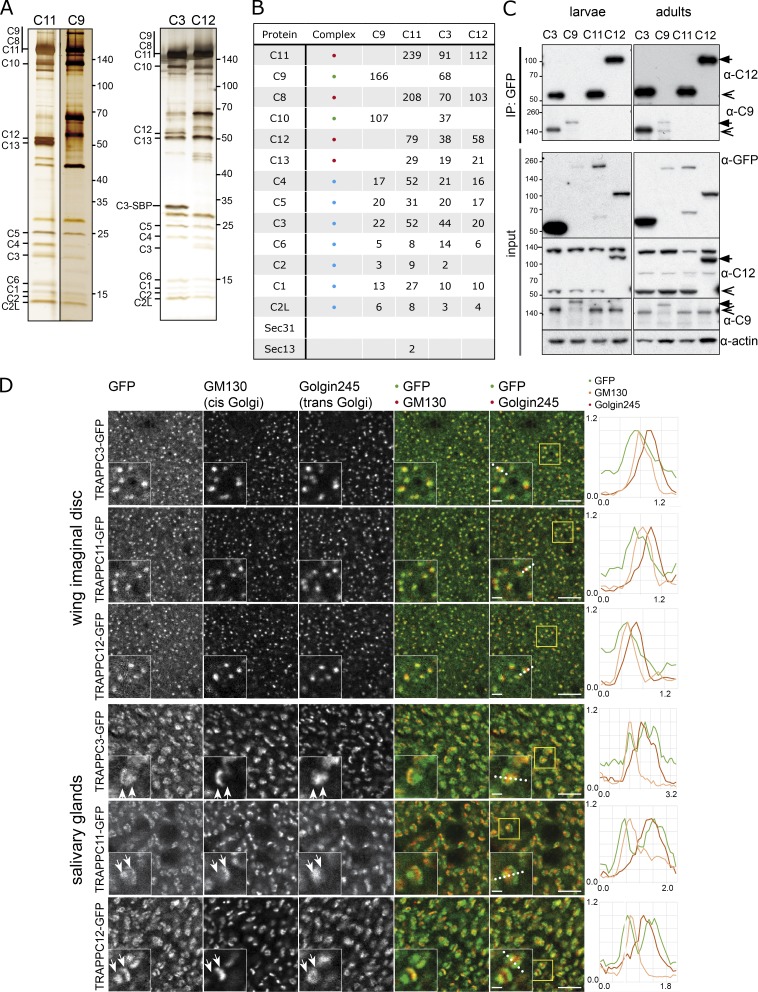Figure 3.
TRAPPII and TRAPPIII are present in embryos, larvae, and adults. (A) Silver-stained protein gels of TAPs of SBP-GFP–tagged TRAPPC11, TRAPPC9, TRAPPC3, and TRAPPC12 from embryos. (B) Mass spectrometry analysis of proteins associated with SBP-GFP–tagged TRAPPC11, TRAPPC9, TRAPPC3, and TRAPPC12 after TAP from embryos. Total spectral counts for each protein are shown. (C) Immunoblot analysis using the TRAPPC9 and TRAPPC12 antibodies of proteins associated with TRAPPC3, TRAPPC9, TRAPPC11, and TRAPPC12 after anti-GFP immunoprecipitation (IP) from lysates prepared from adults (left) or wandering third instar larvae (right) carrying SBP-GFP–tagged alleles. Arrows indicate GFP-tagged TRAPP subunits; arrowheads indicate native TRAPP subunits. Molecular masses are given in kilodaltons. (D) Confocal micrographs of SBP-GFP–tagged TRAPPC3, TRAPPC11, and TRAPPC12 in wing imaginal discs and salivary glands dissected from wandering third instar larvae and stained for GFP, GM130, and Golgin245. In each case, the tag was inserted at the genomic locus, and therefore, the tagged protein was expressed from its native promoter. Line scans are from representative Golgi stacks (dotted lines in GFP/Golgin245 panels). In the salivary gland, all three proteins were discretely located to both the cis and trans ends of the stack (arrows in insets), with a similar bimodal distribution also observed in follicle cells (not depicted). Bars: (main images) 5 µm; (insets) 1 µm. Images are representative of at least two independent experiments, with at least three micrographs obtained from each.

